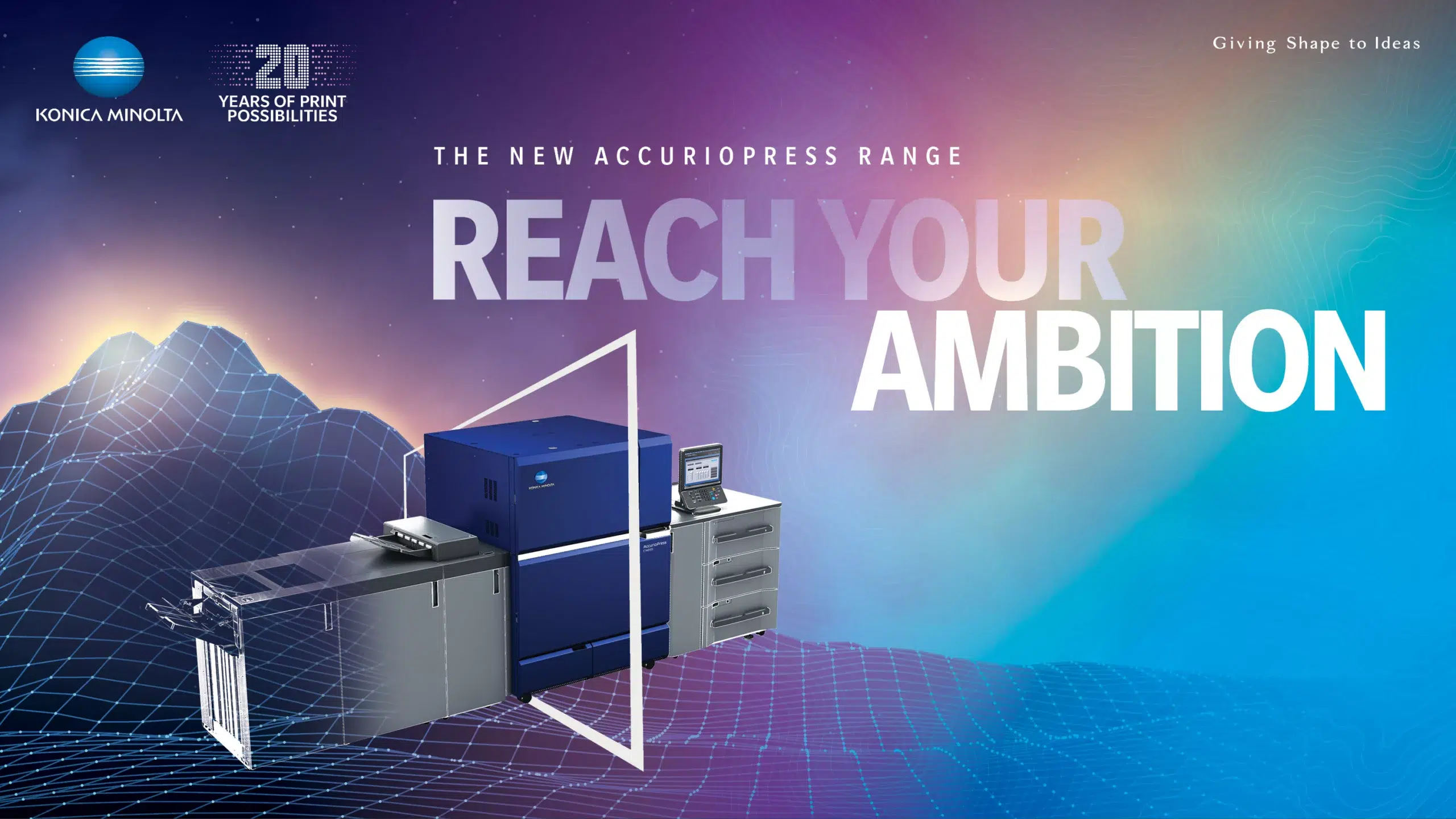The 3D printing industry has significantly transformed, shifting from prototyping to end-use applications. The increasing ability to create strong, affordable 3D printed parts using various innovative materials has fuelled this transition. Within the Australian aerospace and defence industries, these advances allow local manufacturers to increase speed-to-market and bring component manufacturing back onshore.
Bringing 3D printing, also known as additive manufacturing, in-house, rather than outsourcing it to offshore providers, creates additional capacity for critical research and development, keeping organisations at the forefront of what is possible.
The aerospace and defence industries face several unique and complex challenges. Additive manufacturing can solve these problems and support both sectors growth and innovation abilities.
Key opportunities in aerospace
In the aerospace sector, Konica Minolta has identified the following opportunities for 3D printing to overcome key challenges:
Expenses associated with manufacturing and innovation: The high cost of launching objects into orbit has been a major barrier to the development of space exploration. One contributing factor is the substantial number of parts that are required, which must be made to a high level of quality and precision and able to withstand extreme conditions. To address this issue, the space industry is turning to 3D printing as a more cost-effective and efficient alternative to traditional manufacturing techniques. By using 3D printing, it is possible to speed up the prototyping process and reduce waste during production, leading to significant cost savings.
Supply chain disruptions: Supply chain disruptions are a significant challenge within the aerospace industry; however, it also presents an opportunity to explore innovative approaches. 3D printing enables the rapid production of complex parts using a wide range of materials and the creation of intricate shapes not possible with traditional subtractive manufacturing techniques. Additionally, 3D printing can take place locally onsite, reducing the reliance on international suppliers. By embracing 3D printing technologies, the space industry has the potential to develop and strengthen its supply chain.
Manufacturing complexities: As the demand for objects launched into space grows, so does the cost of manufacturing these products. The production of complex parts at scale through 3D printing technologies keeps costs down without compromising quality. These technologies also enable the production of end-use parts in-house, without tooling, making it possible to create custom and intricate designs efficiently and cost-effectively.
By leveraging 3D printing, manufacturers can streamline the production process and simplify the creation of complex parts. This is particularly important in the development of lightweight alternative parts, such as those for satellites and drones, as they require intricate pieces designed for precise balance and aerodynamics. The design flexibility of 3D printing allows engineers to create custom parts that address specific challenges associated with designing for the aerospace industry and that withstand varying elements and environmental conditions by experimenting with alternate materials and prototypes. 3D printing makes it possible to innovate and solve problems in a way that is not attainable using traditional manufacturing methods.
Key opportunities in defence
In the defence sector, the key opportunities identified include:
Supply chain disruptions: Maintaining a reliable supply of equipment and spare parts is crucial for the proper functioning of operational platforms. Breakdowns in the manufacture and flow of goods can lead to availability issues that can severely impact defence readiness. 3D printing technologies offer a solution by allowing end-use parts to be on-demand, helping build and sustain resilient supply chains and improve defence coordination capabilities. 3D printing also offers a solution to supply chain obsolescence, in some instances the original traditional manufacturer no longer exists and can make replacing a small part a costly and time-consuming exercise.
Achieving operational readiness: Limited access to necessary equipment and parts can seriously hinder the effectiveness of the defence force. Even a small, seemingly insignificant part like a bracket for a radio can have major consequences if it is not available. 3D printing can help improve operational readiness by enabling more efficient procurement and shorter production cycles. For instance, defence engineers can use 3D printing to rapidly create prototypes at combat outposts, design new parts, and repair existing ones. By leveraging 3D printing technology, it is possible to enhance the responsiveness and agility of the defence force.
With new materials, more advanced technologies, and cost-effective printing techniques, the full capabilities of 3D printing technology are lending themselves to solving these unique challenges.
The benefits of additive manufacturing in aerospace and defence
There are four major advantages of adopting 3D printing applications in space and defence. These include:
1. Bespoke manufacturing and geometric freedom:
One of the major advantages of 3D printing over traditional manufacturing is the ability to easily create complex and customisable shapes and internal geometries. While conventional methods may require multiple parts to be welded together to achieve a desired shape, 3D printing allows manufacturers to create objects in any shape imaginable, including lattice, honeycomb and hollow structures. This level of design freedom can lead to improved efficiency and cost savings, as well as the creation of lighter and more durable products. It is also precise, repeatable, scalable, and reduces the risk of excess inventory if changes are made to the product design after production.
2. Rapid prototyping:
Rapid prototyping, which involves creating a physical model of a product design using 3D printing technology, can help defence and space engineers test and refine their designs and materials in a cost-effective and efficient manner. Producing prototypes quickly and at a lower cost makes it possible to identify and address potential issues before mass production, reducing the risk of defects and ensuring the final product meets all necessary specifications.
3. Sovereign industrial capability:
By using 3D printing, the space and defence sectors can reduce their reliance on imported parts and instead produce them locally. This not only provides opportunities for Australian businesses to participate in the supply chain but also helps to address vulnerabilities and build resilience in the supply chain. In this way, 3D printing can be a key enabler for the localisation of manufacturing in the space and defence sectors.
4. Improved sustainability:
In addition to being a cost-effective manufacturing method, 3D printing is also an environmentally responsible choice for manufacturers. One of the key benefits of 3D printing is the low level of waste it generates compared to traditional manufacturing methods. This is because 3D printing lets manufacturers create parts using only the material that is needed rather than having to produce copious amounts of excess material that is often discarded during the tooling process. In addition, the materials used in 3D printing are often more cost-effective and can produce parts just as durable as those produced using traditional methods. Overall, the low waste and cost-effectiveness of 3D printing make it a responsible choice for manufacturers looking to reduce their environmental impact.
Leveraging 3D printing to drive innovation
Fleet Space, Australia’s only commercial nano satellite manufacturer, partnered with Konica Minolta to scale up Fleet Space’s production of small satellites for low Earth orbit to connect billions of devices, pushing the boundaries of innovation within 3D printing. As a results of harnessing the efficiencies of deploying a smart, in-house 3D printing solution, Fleet Space developed the world’s first 3D-printed, all-metal patch antenna, which delivers ten times more throughput per kilogram of spacecraft.
Fleet Space is one of Australia’s most innovative companies, but innovation often comes at a significant cost. The ability to 3D print with aluminium in a precise, repeated, and scalable method makes volume manufacturing more productive and cost-effective. These efficiencies can unlock capacity for important research and development, providing Fleet Space more time and resources to accelerate product development by focusing on designing prototypes and new parts during downtime from manufacturing the antennae.
3D printing in the defence and space industries allows for exceptional logistic capabilities, enabling these industries to mitigate supply chain risks and respond effectively to changing business conditions. 3D printing also keeps these industries at the forefront of additive manufacturing technology and allows for the implementation of production-stage runs at a fraction of the time and material cost compared to traditional methods.
With Konica Minolta, the aerospace and defence industries can take advantage of the 3D printing revolution and find the right technology for their specific needs including customisation, faster prototyping, reduced waste, and ease of application.
To learn how you can use 3D printers to take advantage of these opportunities, contact the Konica Minolta team today.




